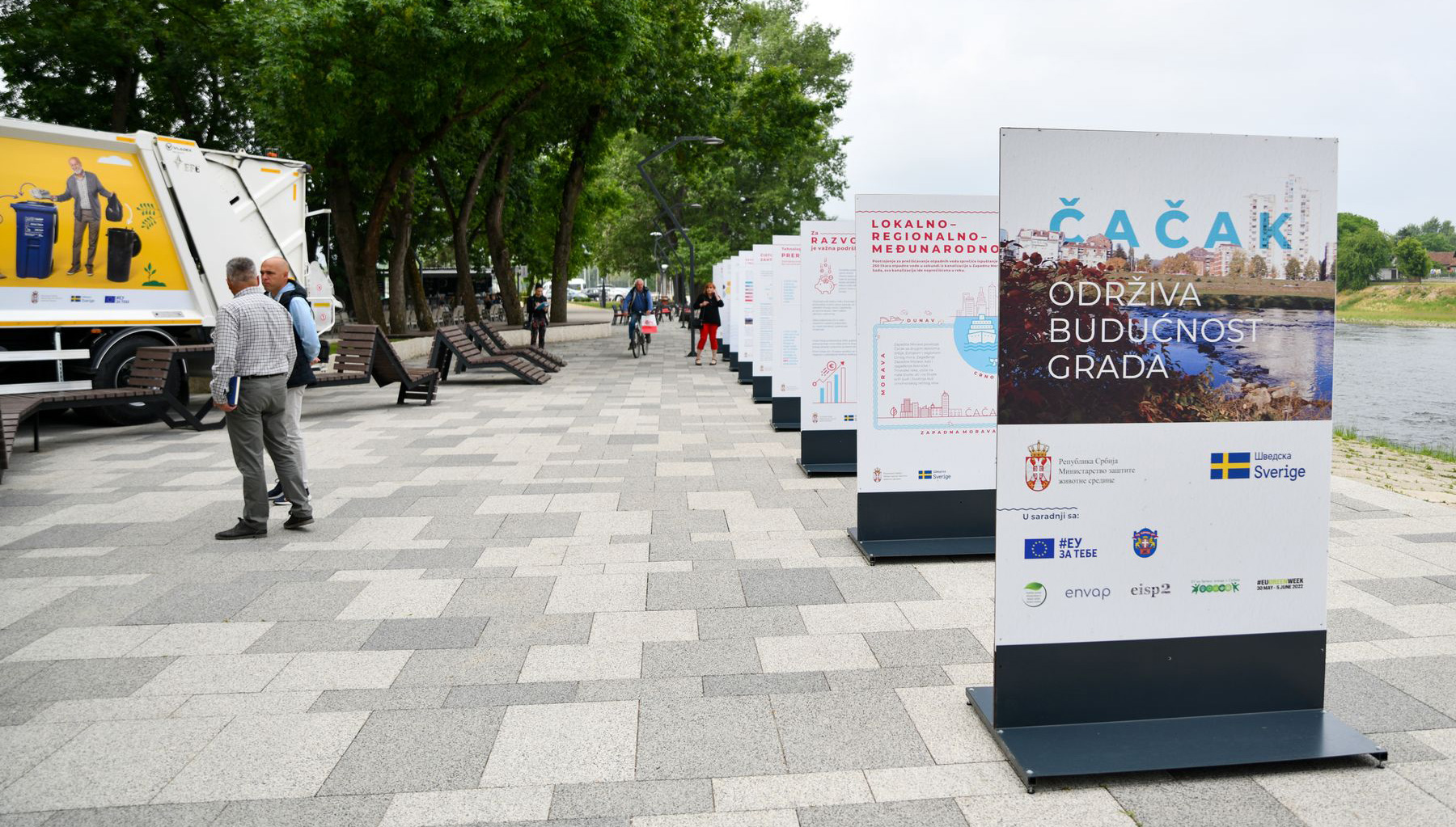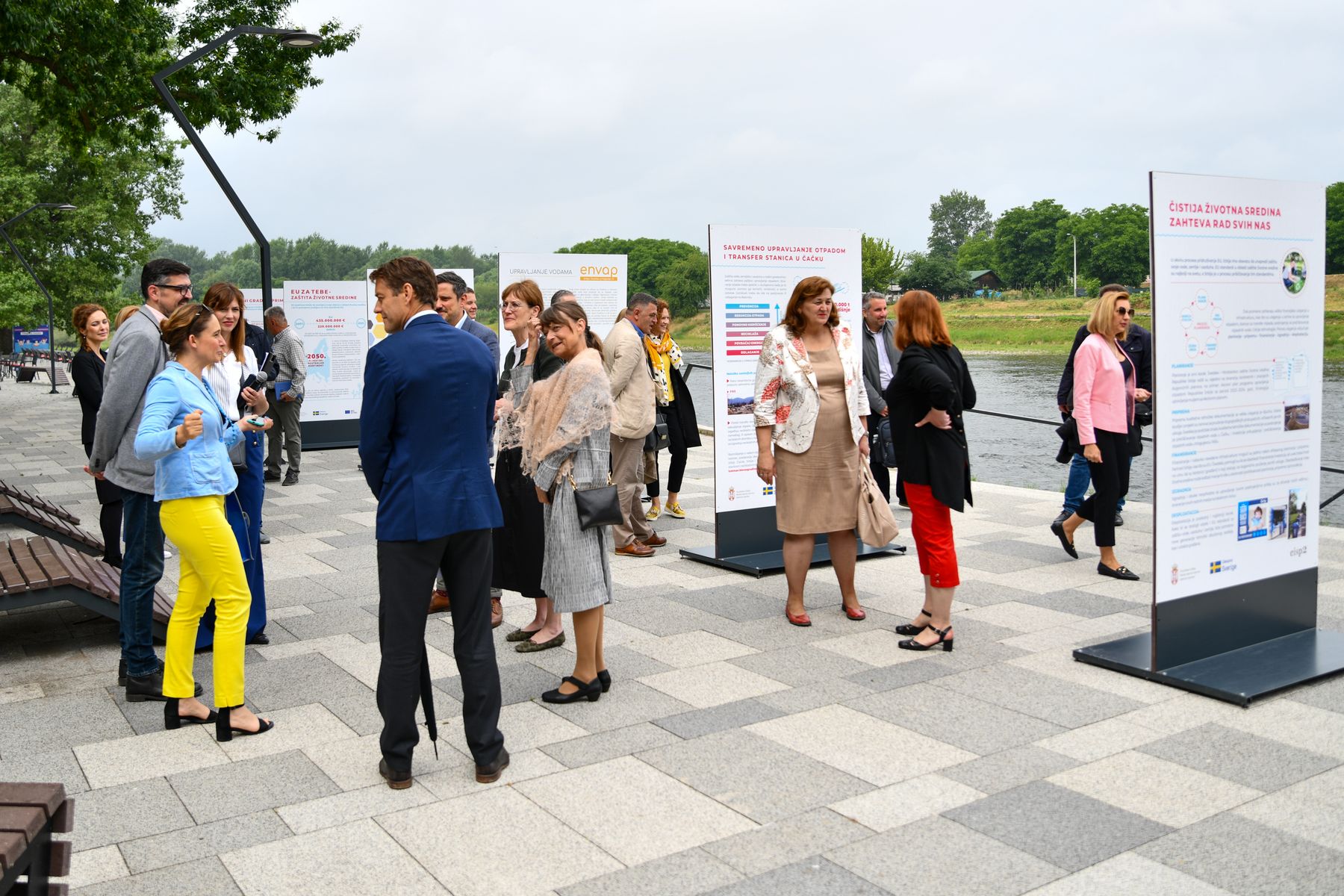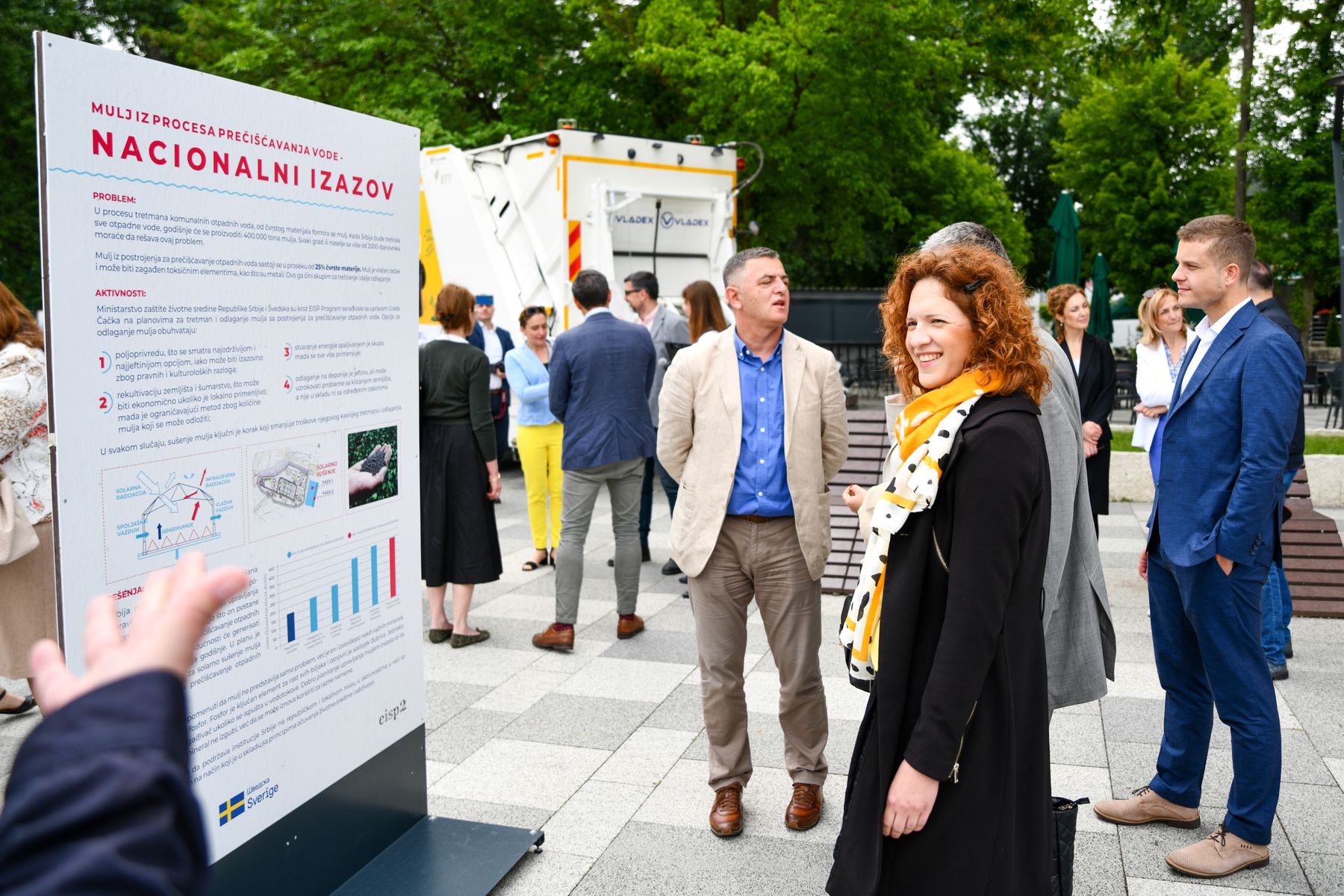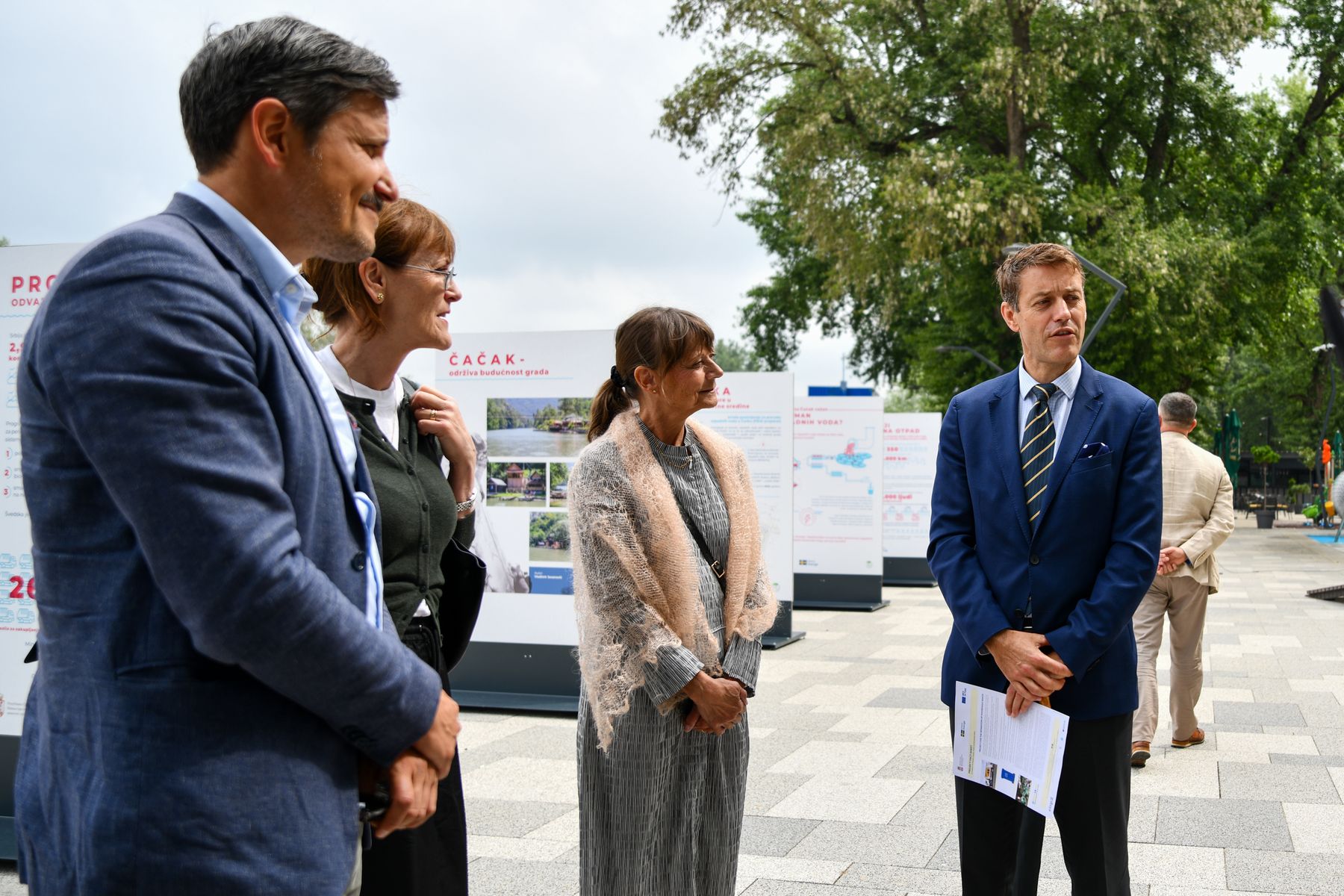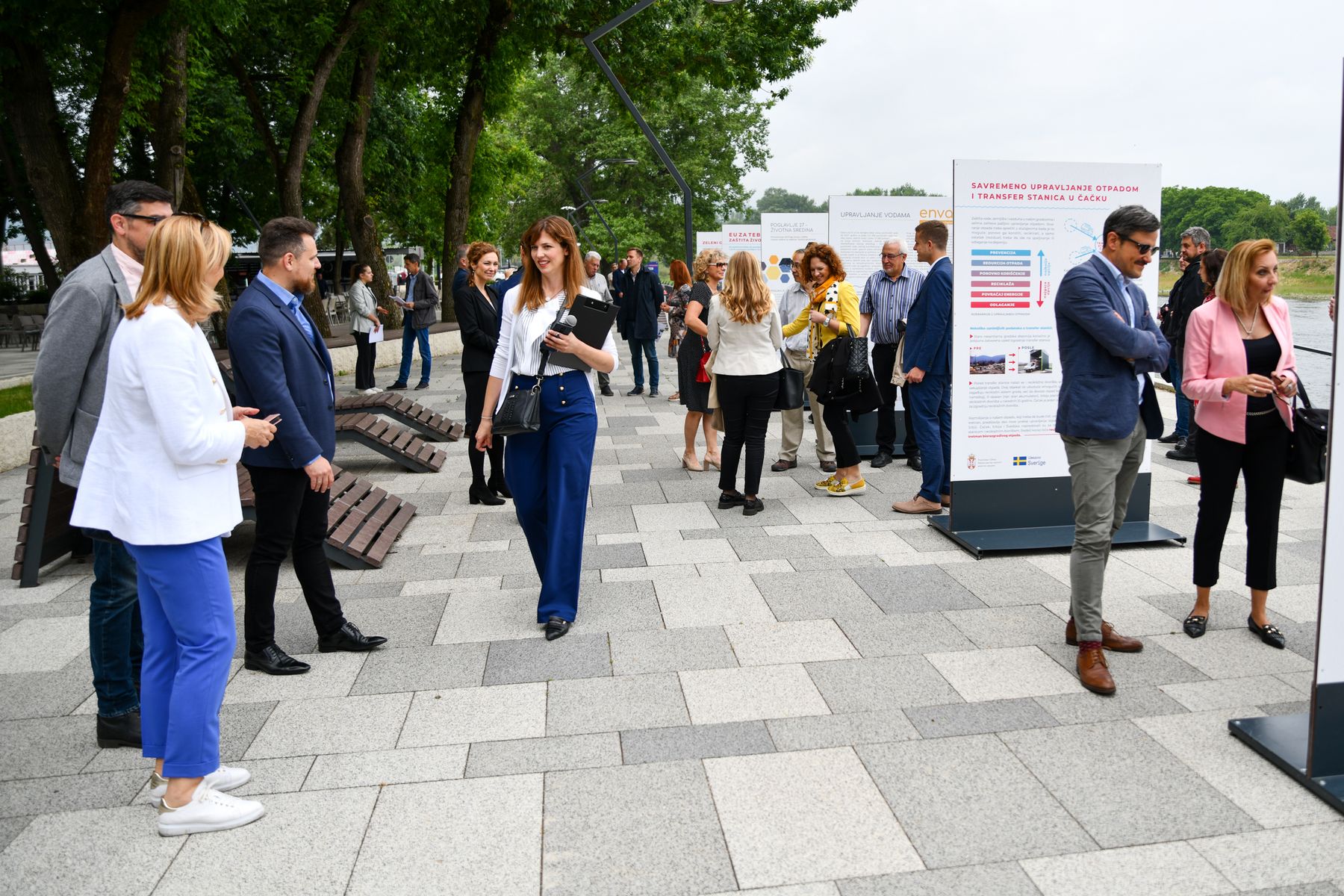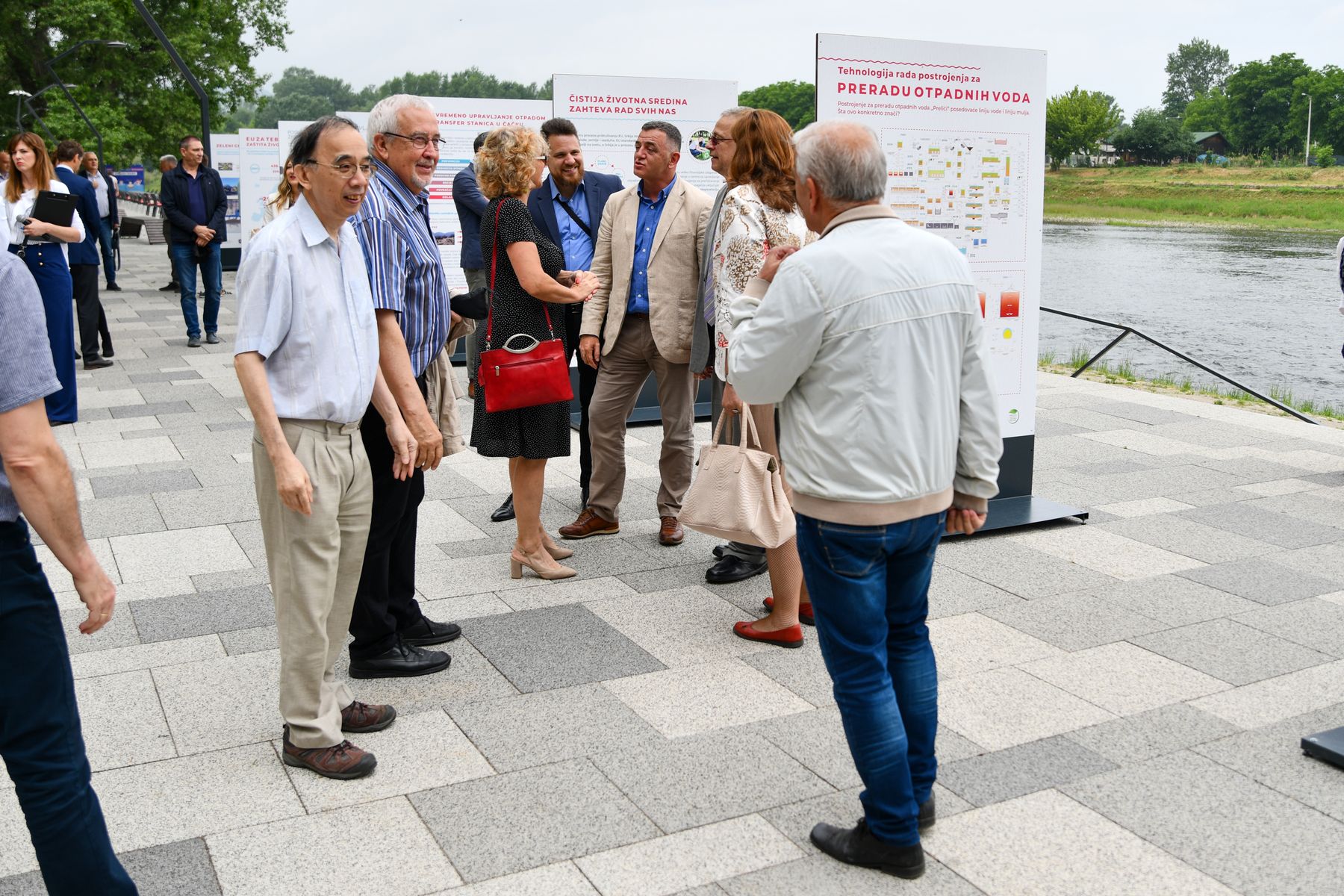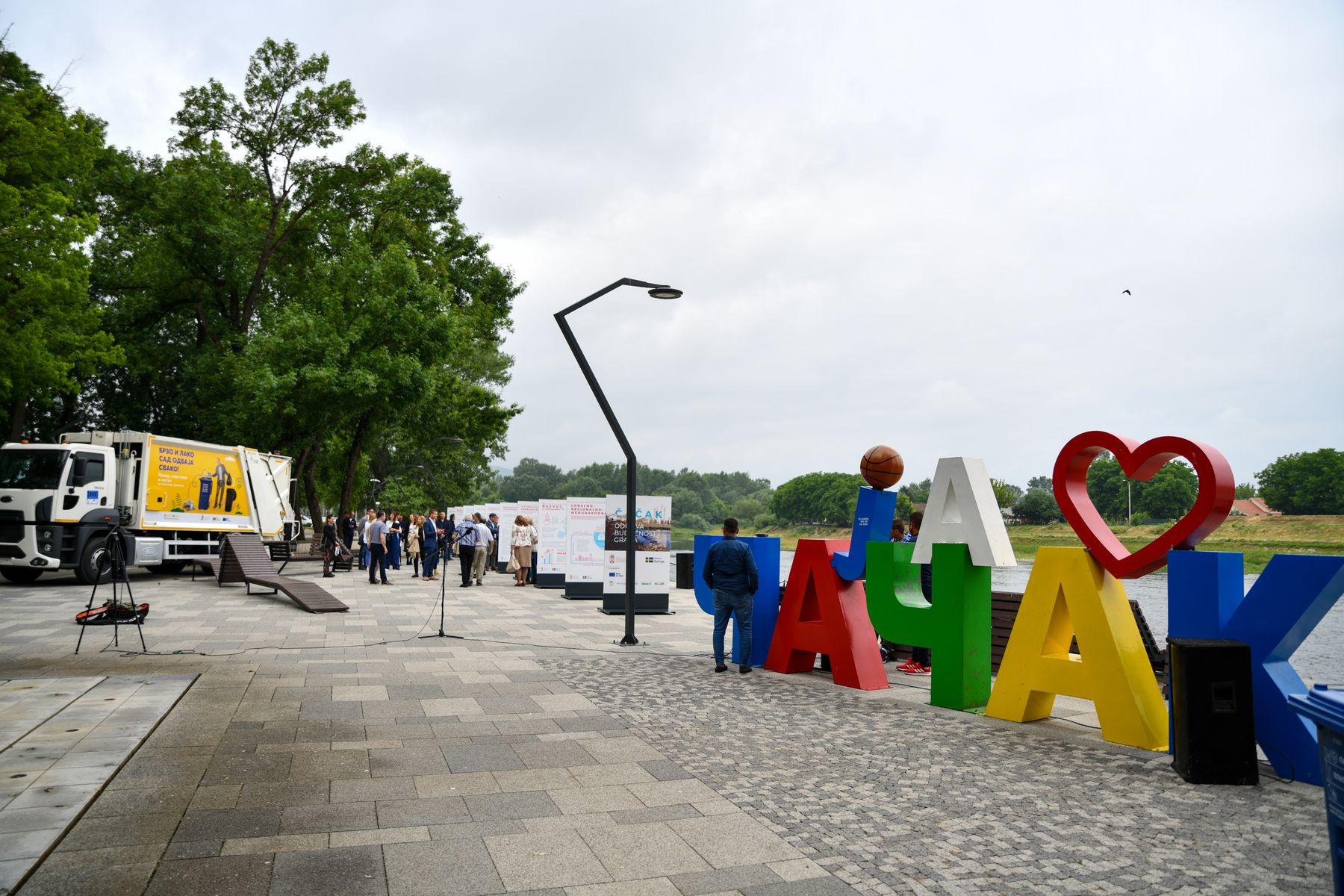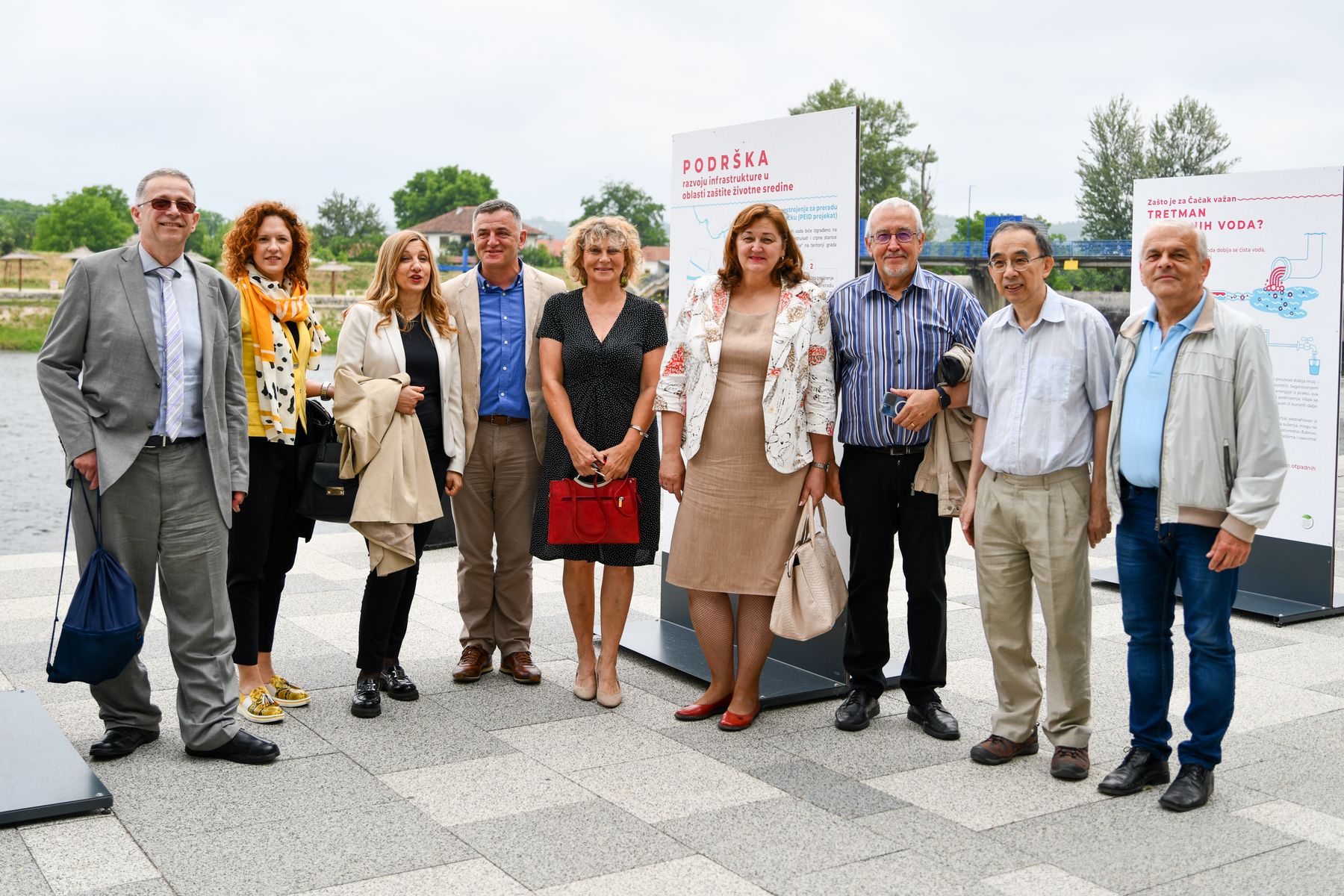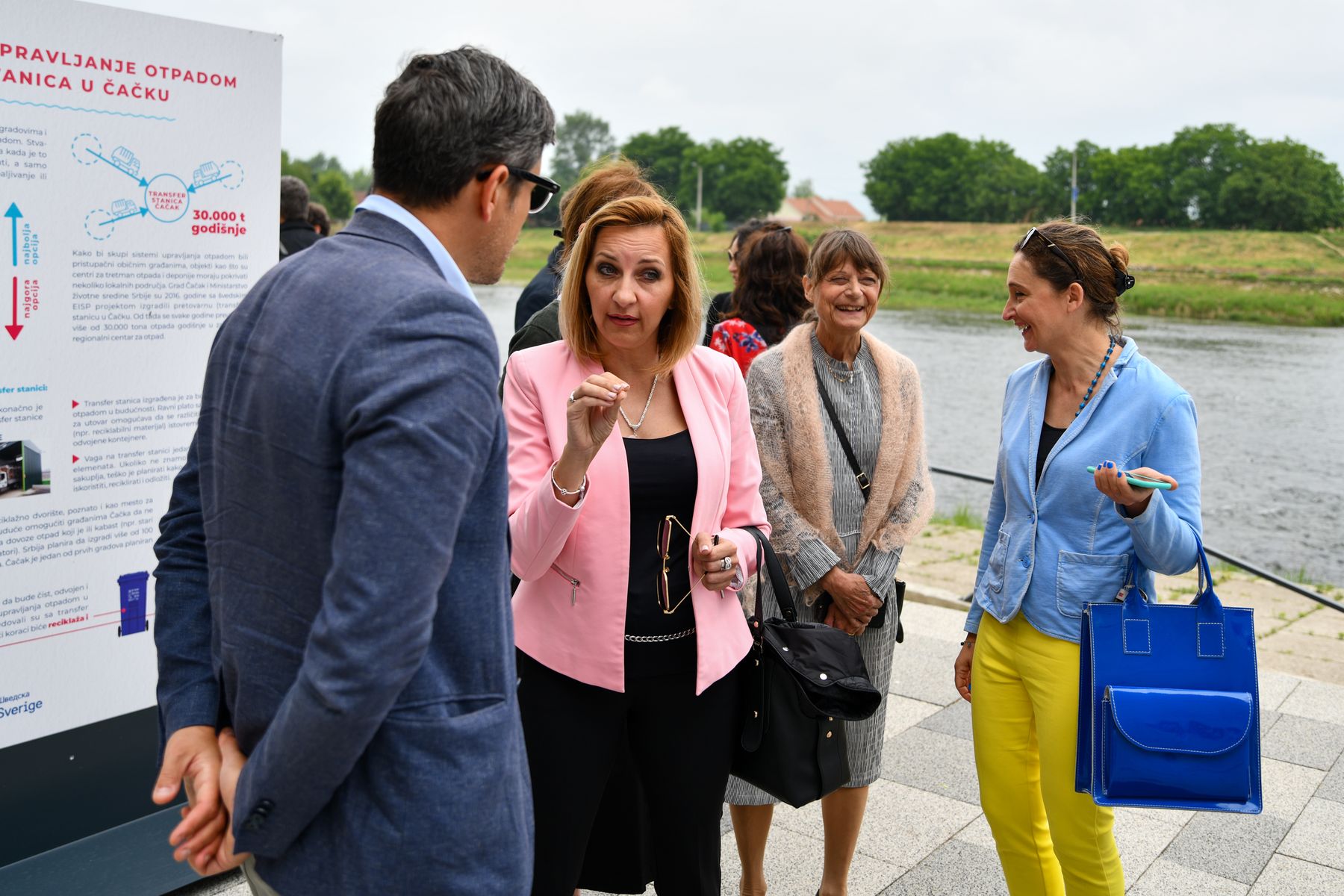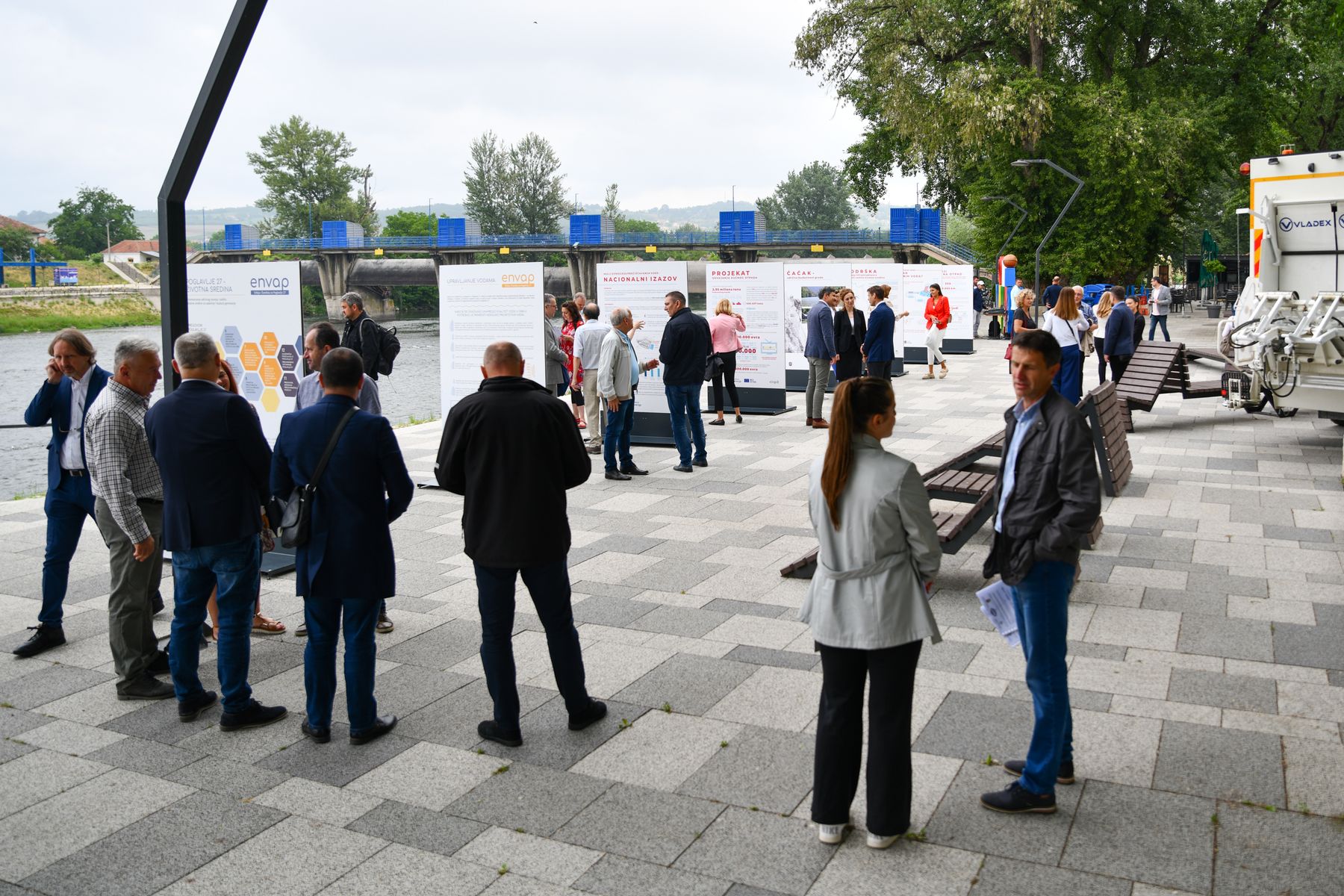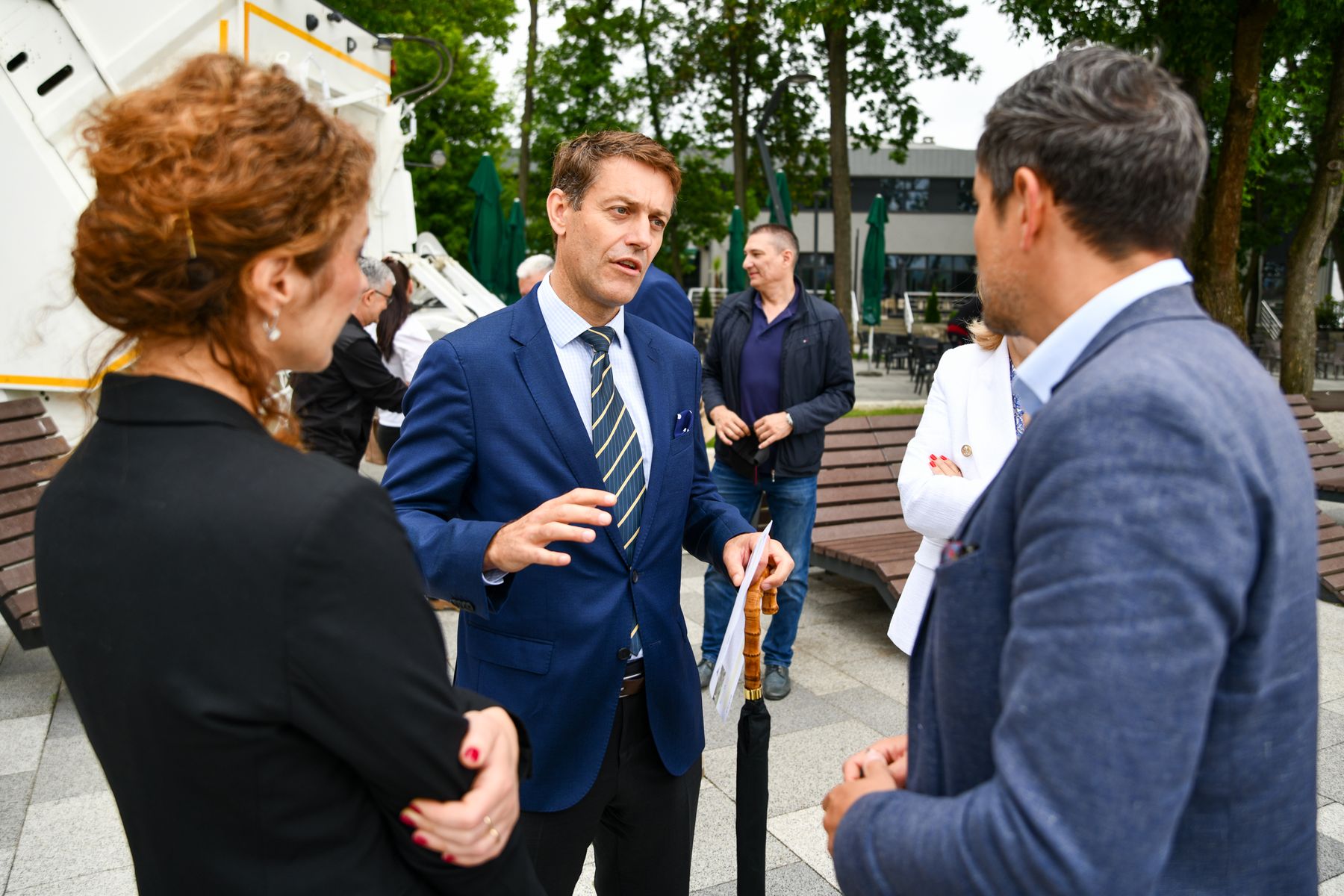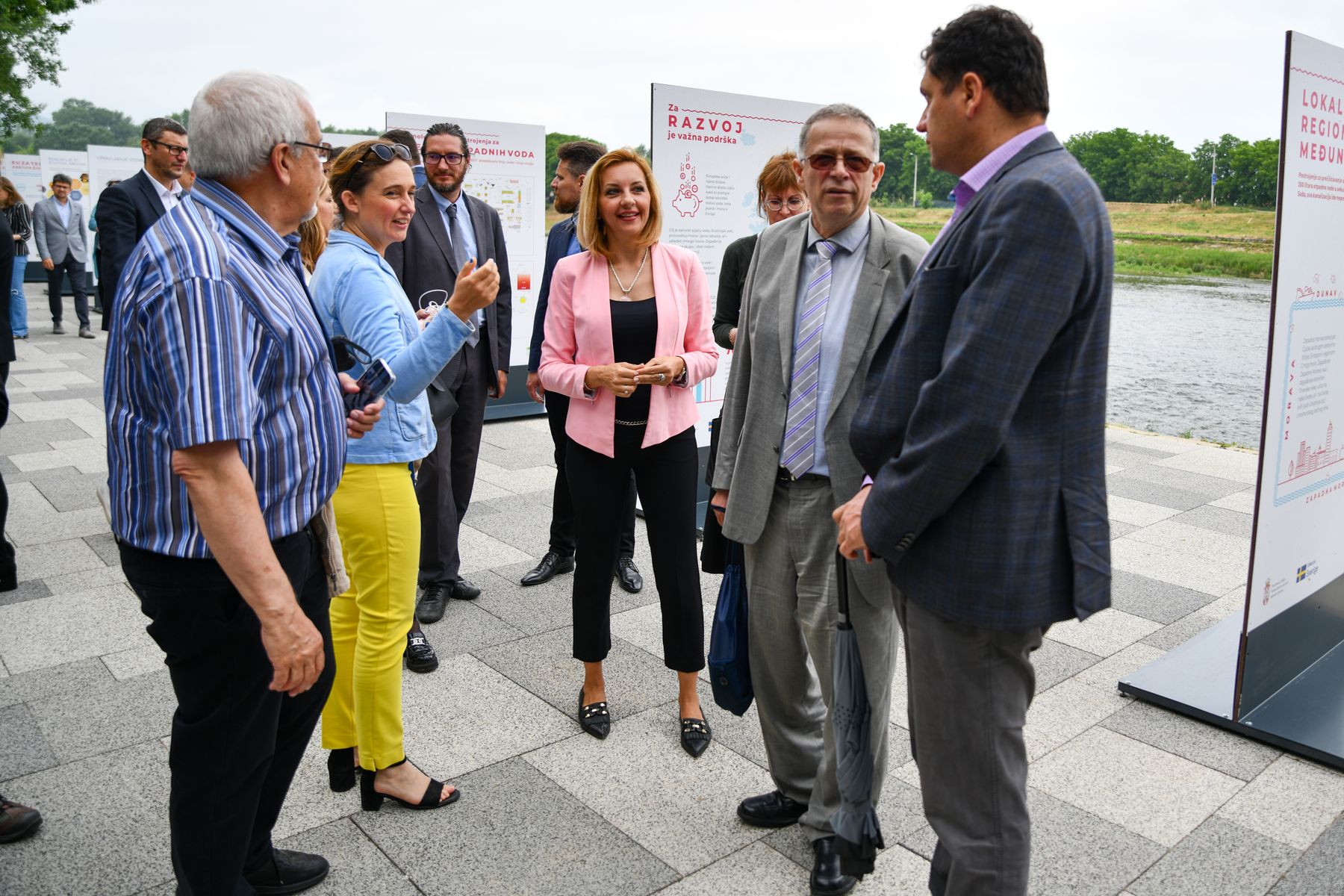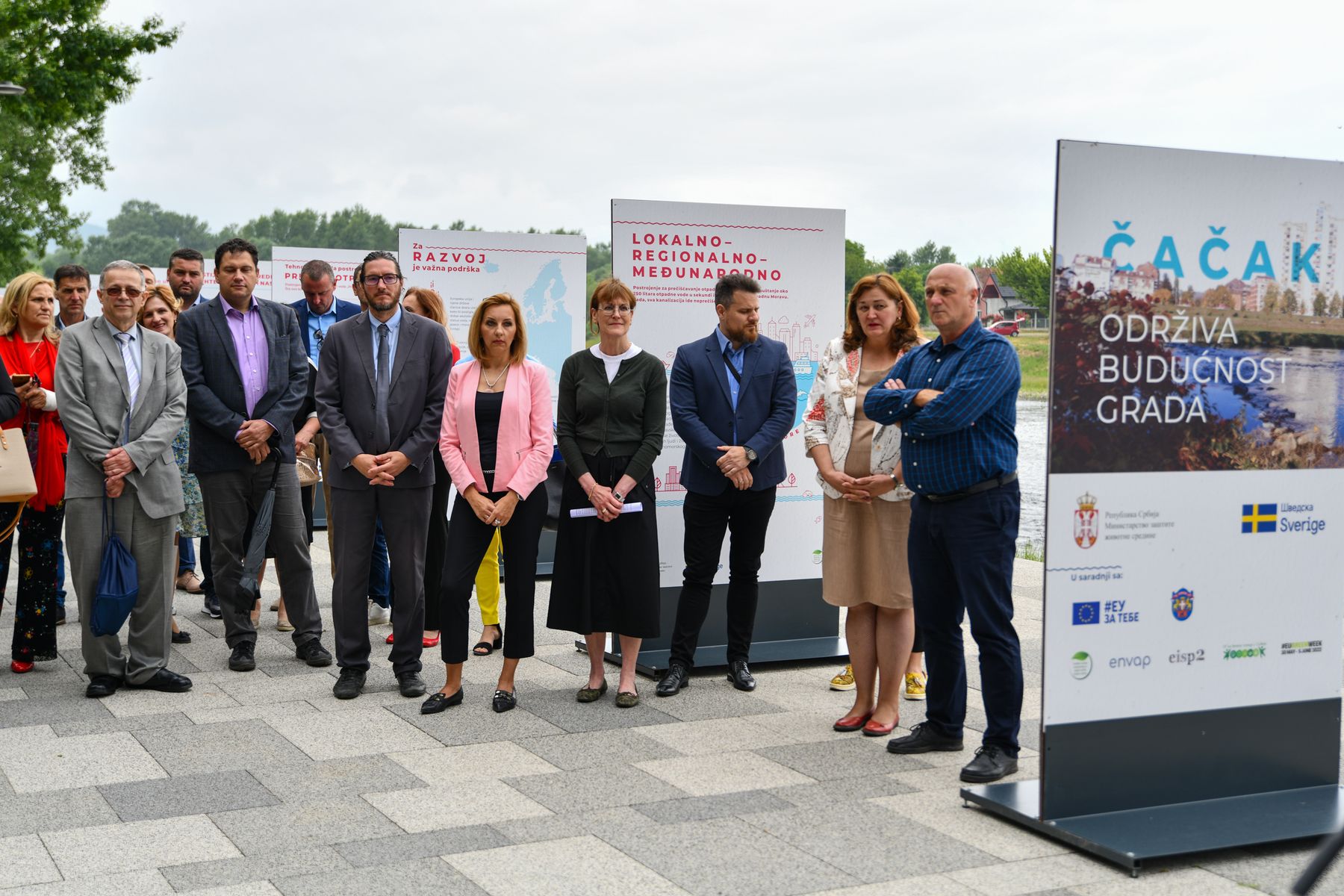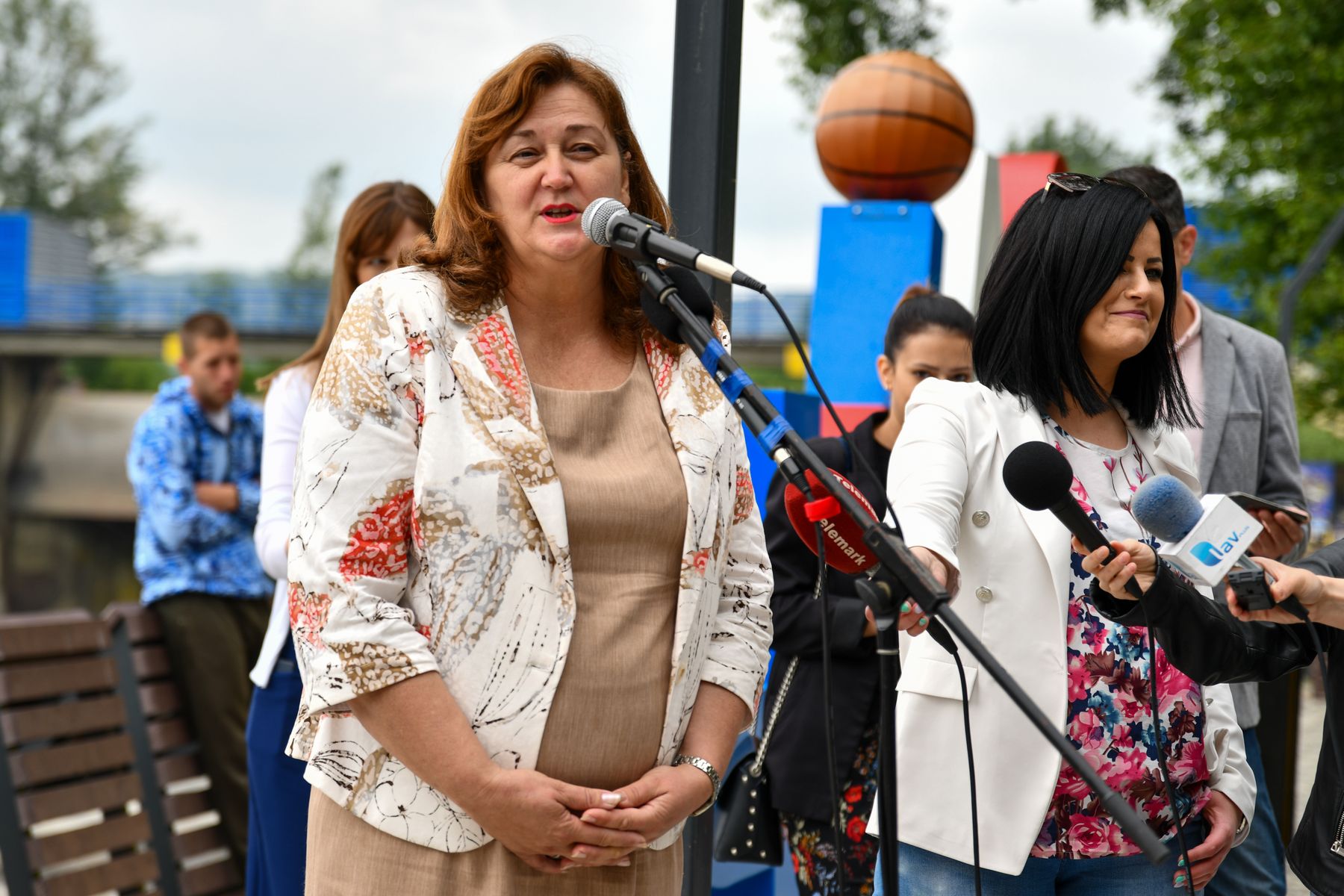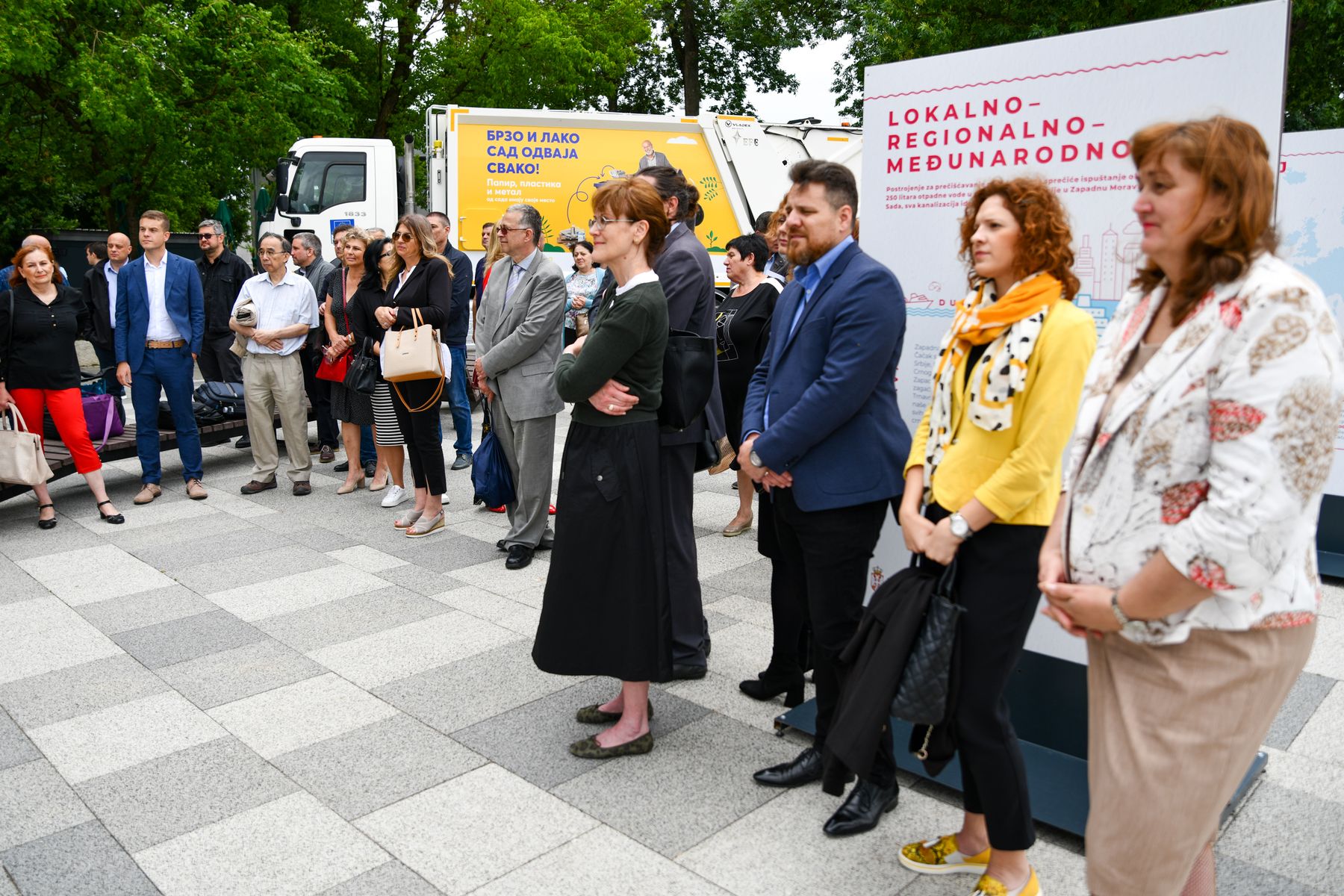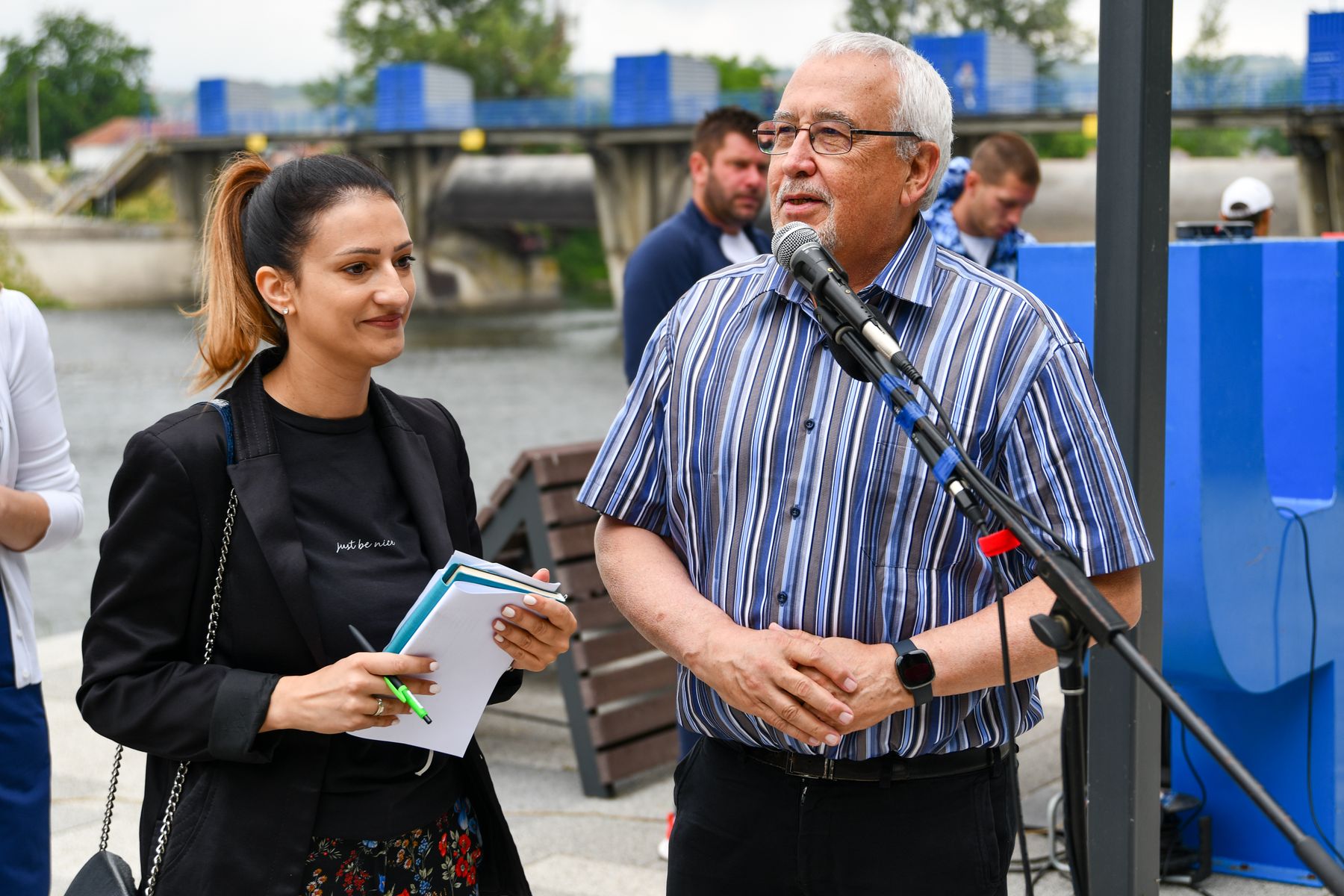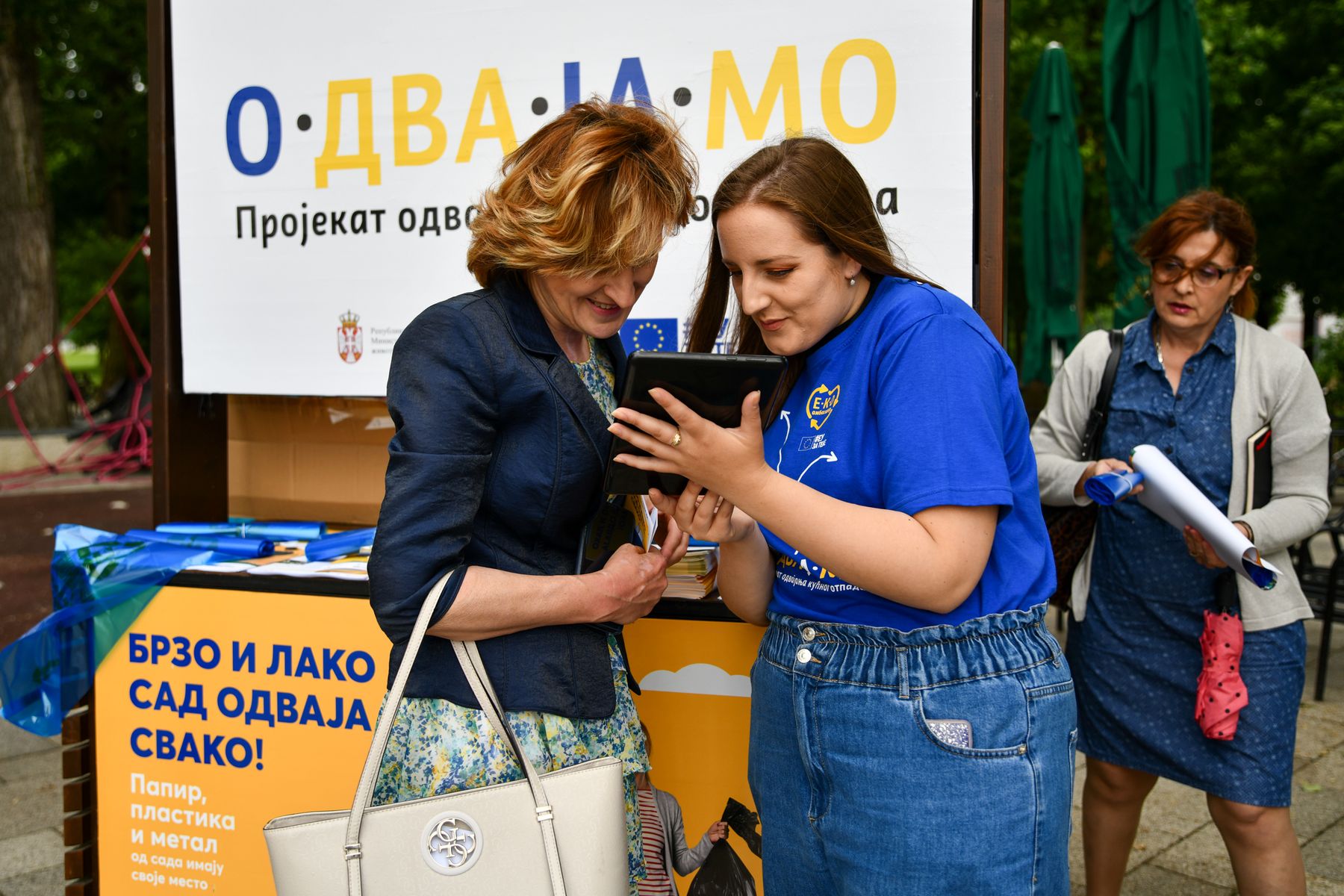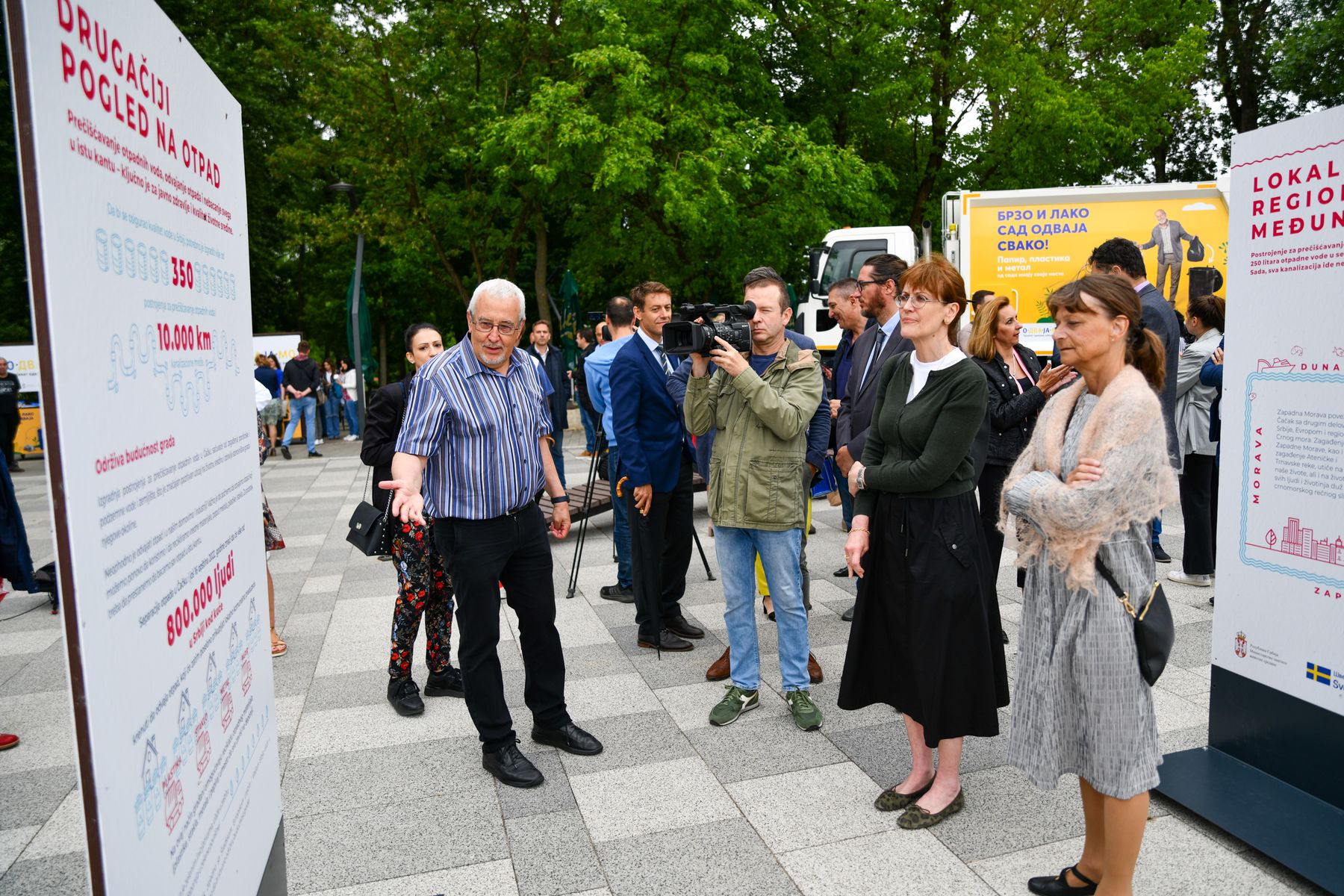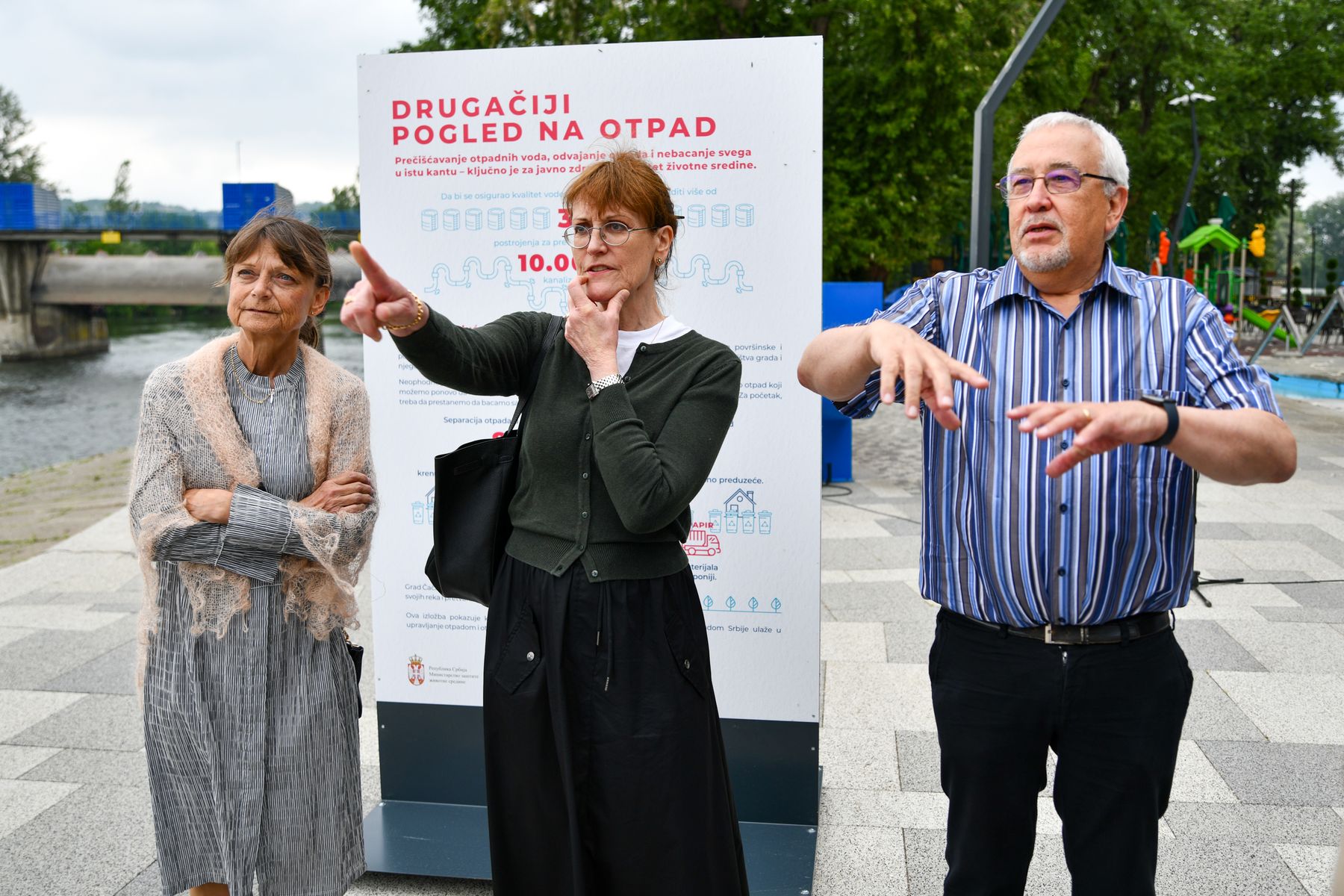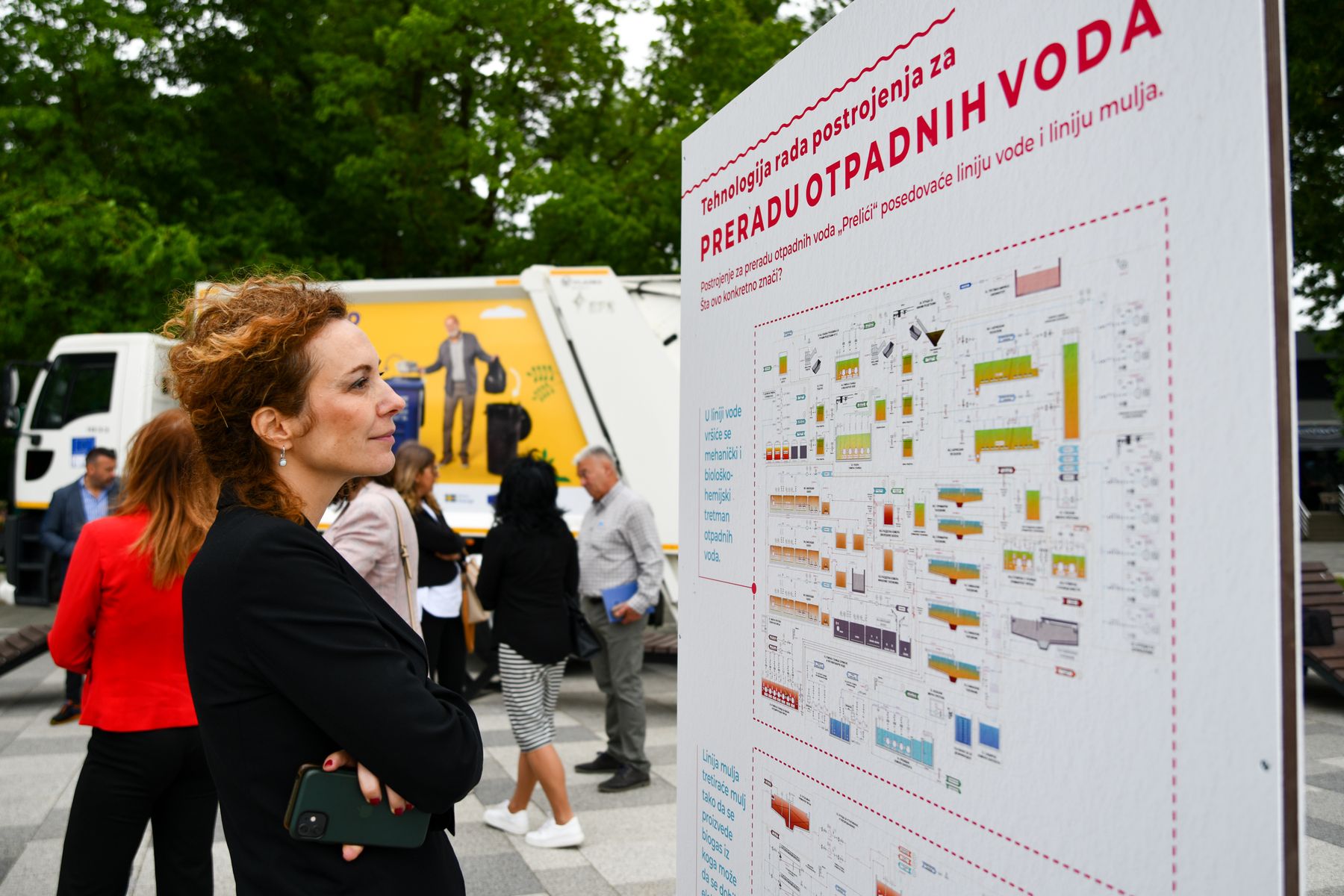How many wastewater treatment plants are needed in Serbia for the water in the rivers to be of good quality? How many citizens will start recycling in Serbia in 2022? How can European integration improve the quality of life in Serbia and encourage green investments? The answers to these questions are provided by the “Čačak – Sustainable City Future” exhibition opened today at the City Beach in Čačak. Twenty panels tell the story of the way in which Čačak together with Sweden, the European Union and the Serbian Government invests in waste and wastewater management to create a sustainable city future.
An important segment of the exhibition relates to the importance of building a wastewater treatment plant in Čačak with a sewage system, including sludge management solutions. Sveden is supporting the Serbian Government and the City of Čačak with EUR 750,000 in the preparation of the documentation for the wastewater treatment plant within the “Priority Environmental Infrastructure for Development” Project – PEID. The European Union will provide a major part of the investment, and the Serbian Government and the City of Čačak also take part in project investment and implementation. During the opening of the exhibition in Čačak, referring to the importance of this and other cooperation projects financed by Sweden in cooperation with the Ministry of Environmental Protection in Čačak, Ms Karin Mc Donald, Head of the Development Cooperation Group of the Embassy of Sweden in Belgrade, pointed out: “This year’s Green Week tells us about the importance of citizens’ awareness of the environment and its protection. The message of how the environment of Čačak affects all cities along the Black Sea basin is very important for the raising this awareness. That is the significance of the exhibition we are opening today, which shows the cooperation between the City, the Ministry, the European Union and Sweden. The exhibition shows us how Sweden, through its funds, provides support to the construction of wastewater treatment plants and waste management projects.”
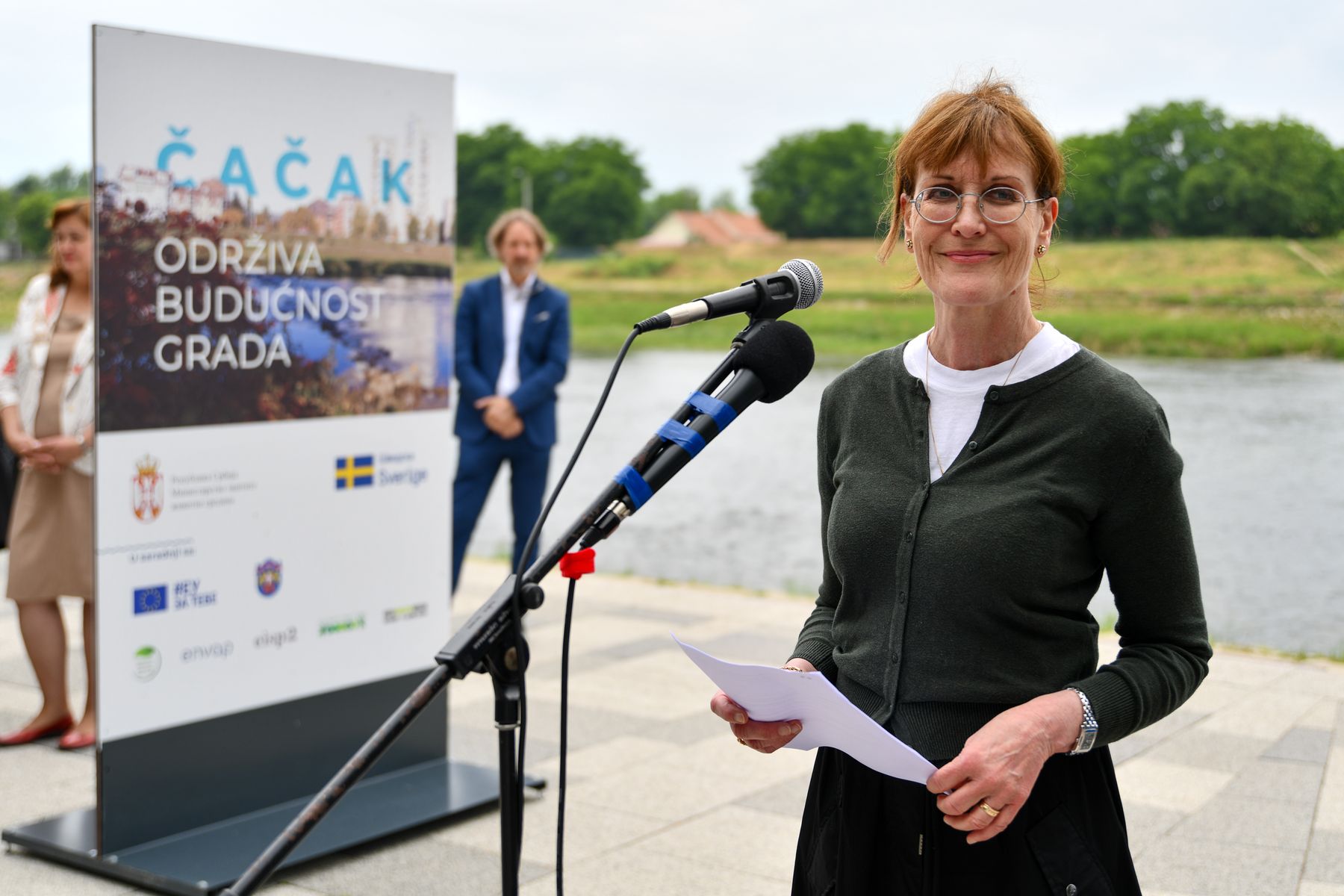
All untreated sewage flows into the West Moravia and its natural watercourses, which is one of the key factors in environmental pollution and public health. The wastewater treatment plant will prevent the discharge of about 250 litres of wastewater per second from the sewage system into the West Morava. This is just one of the benefits of the future plant for preserving the quality of human health, food and the environment, not only in Čačak, but also in the entire Black Sea basin where the river flows. The exhibition also presents other activities of Sweden’s joint work with local and national authorities on sludge and waste management in accordance with the principles of environmental protection and sustainability. The household waste separation project is in full swing. The project aims to increase the recycling rate in four regional waste management centres in Serbia to 15% in the next two years.
The project is implemented in seventeen towns and municipalities, Čačak being one of them.
Sandra Dokić, the Assistant Minister in the Ministry of Environmental Protection, also talked about the green investments in Čačak:
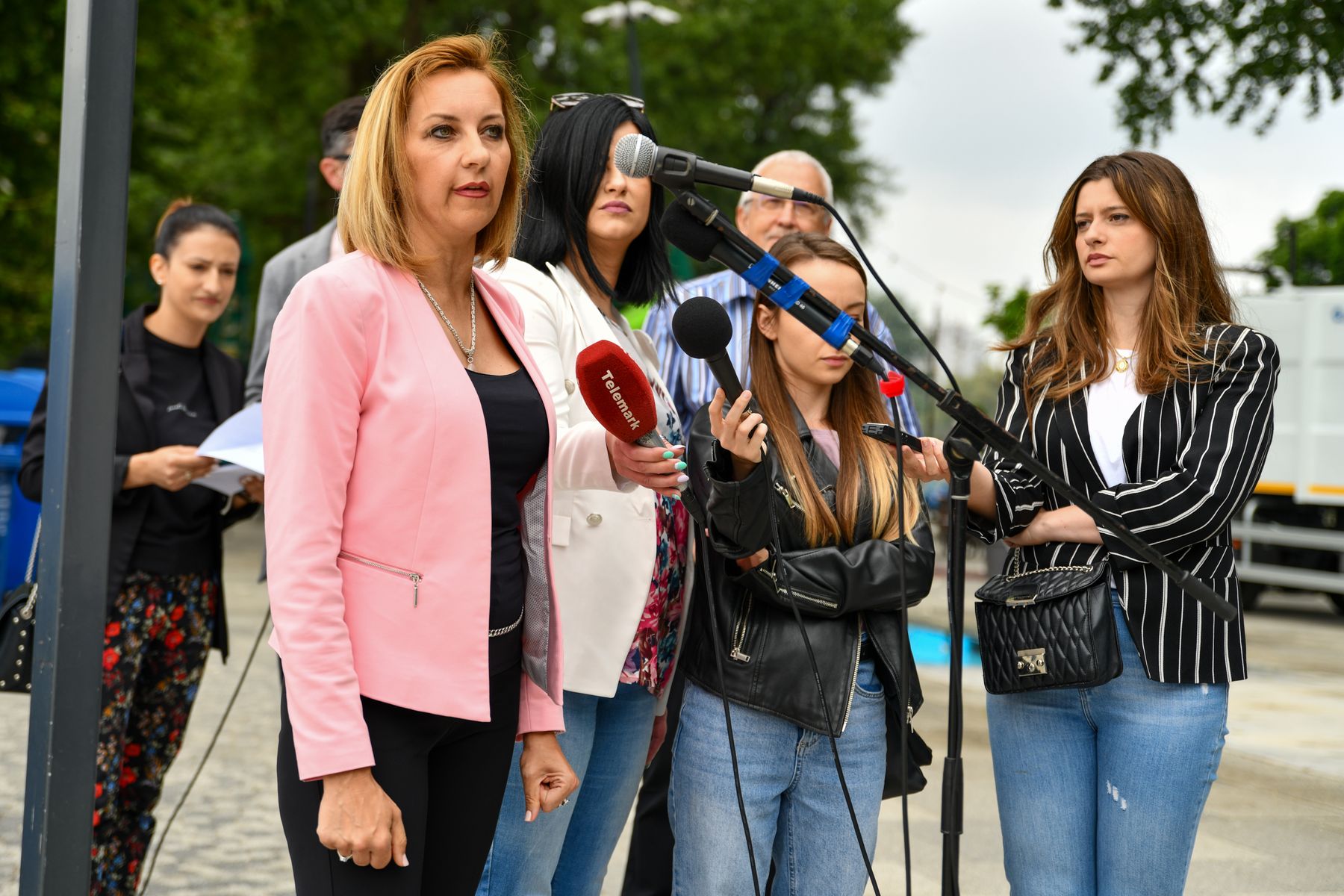
“Čačak consistently follows the priority of our Ministry, particularly in terms of waste and wastewater management and that is why we are here to show what we have done in the previous period and what we will do next, and why all the citizens of Čačak should be proud. Čačak is moving in the direction of development, towards a sustainable city that will be a completely green city.” Ms Dokić particularly emphasized the importance of the waste separation investment in four regions, the project which marked the beginning of this year’s EU Green Week: “Čačak is a part of this project and at the moment, it is very important to include the citizens in the implementation, as it is important for future generations. Owing to the EU and Sweden, Čačak will receive 15,000 bins, about 600 containers and three vehicles for waste collection. The citizens will understand that this project is a privilege, as it gives them the opportunity to separate waste and continue using it as a resource.”
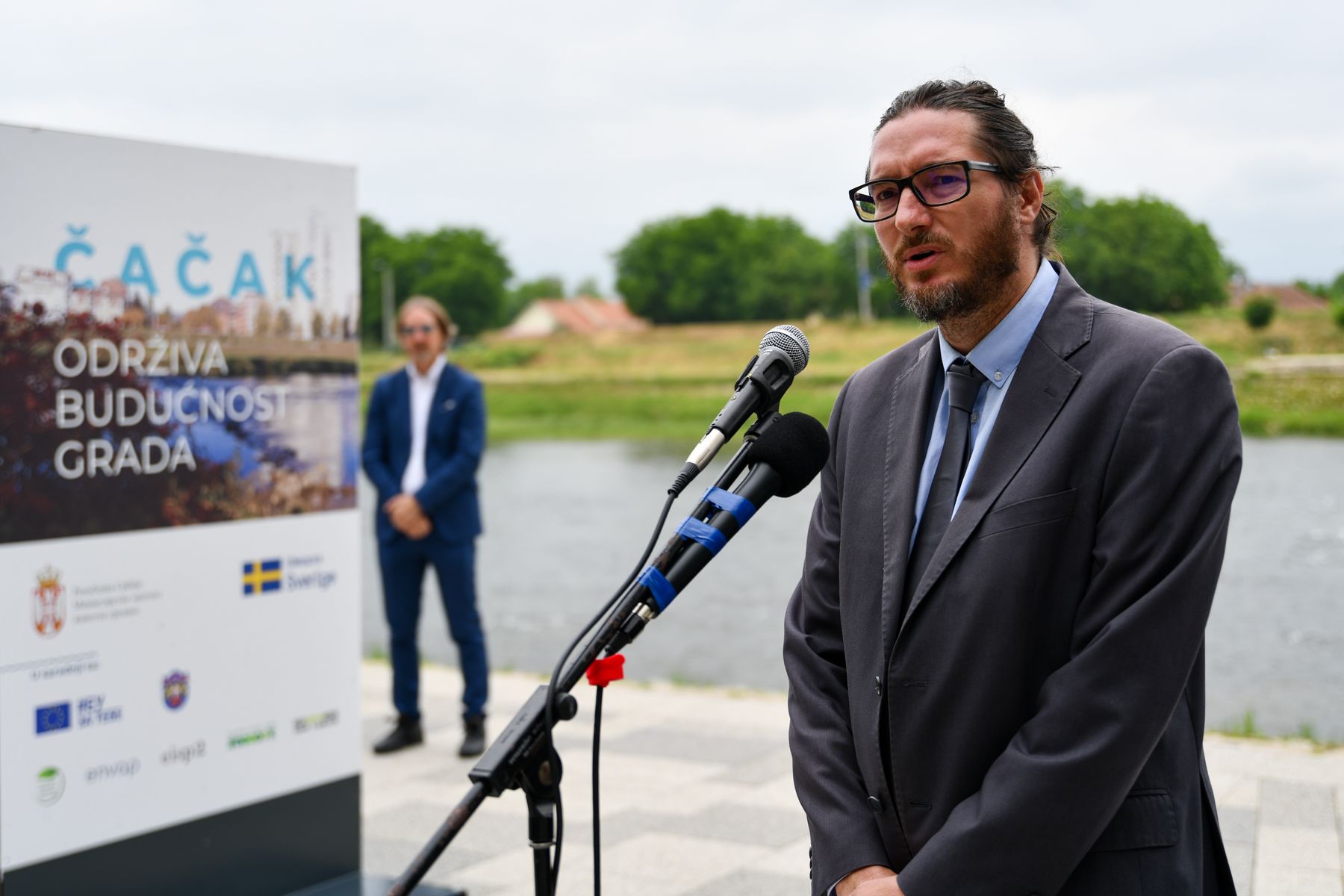
“Čačak – Sustainable City Future” exhibition is a part of the EU Green Week celebrated this year from 30 May to 5 June across Europe with the same goals – developing a circular economy, achieving “zero pollution” and preserving biodiversity. The EU environmental standards are among the best in the world, and the European Union is supporting Serbia in meeting its environmental objectives and gradually raising them to the level of the EU standards. Antoine Avignon, the EU Delegation to Serbia Programme Manager, said: “In these difficult times in Europe, working together is more important today than ever. Today’s exhibition shows the joint results we have achieved in waste separation and wastewater treatment projects here in Čačak.”
Čačak will be the first city in Serbia to completely solve the problem of unsanitary landfill. Mirjana Djoković, Assistant Mayor of Čačak in charge of the environmental protection talked about green initiatives, their significance for the city and the citizens:

„I had the honour and privilege to be part of the Wastewater Treatment Plant project from the feasibility study to the present day, when we completed the whole project documentation and provided money, and we are ready for the implementation. It is up to us to spend these funds for the right purpose and show our fellow citizens all the advantages of a life of much higher quality.”
“Čačak – Sustainable City Future” outdoor exhibition will last until 6 June. The exhibition is organized by Sweden in cooperation with the Ministry of Environmental Protection, the City of Čačak and the EU Delegation to Serbia.
The presented cooperation project funded by Sweden with the Ministry of Environmental Protection are the following: Priority Environmental Infrastructure for Development (PEID) implemented by EPTISA, Environmental Infrastructure Support Programme Phase II (EISP2) implemented by Brooks Hannas & Partners, as well as the Environment Accession Project (ENVAP), implemented by the Swedish Environmental Protection Agency. The exhibition also follows the „EU for Green Agenda in Serbia “project (implemented by UNDP in partnership with Sweden and the European Investment Bank), as well as other investments in sustainable future implemented by the city of Čačak and the Ministry of Environmental Protection.


